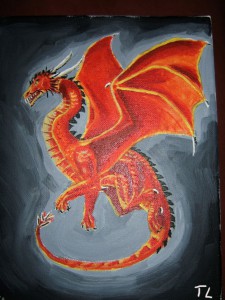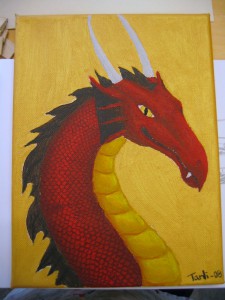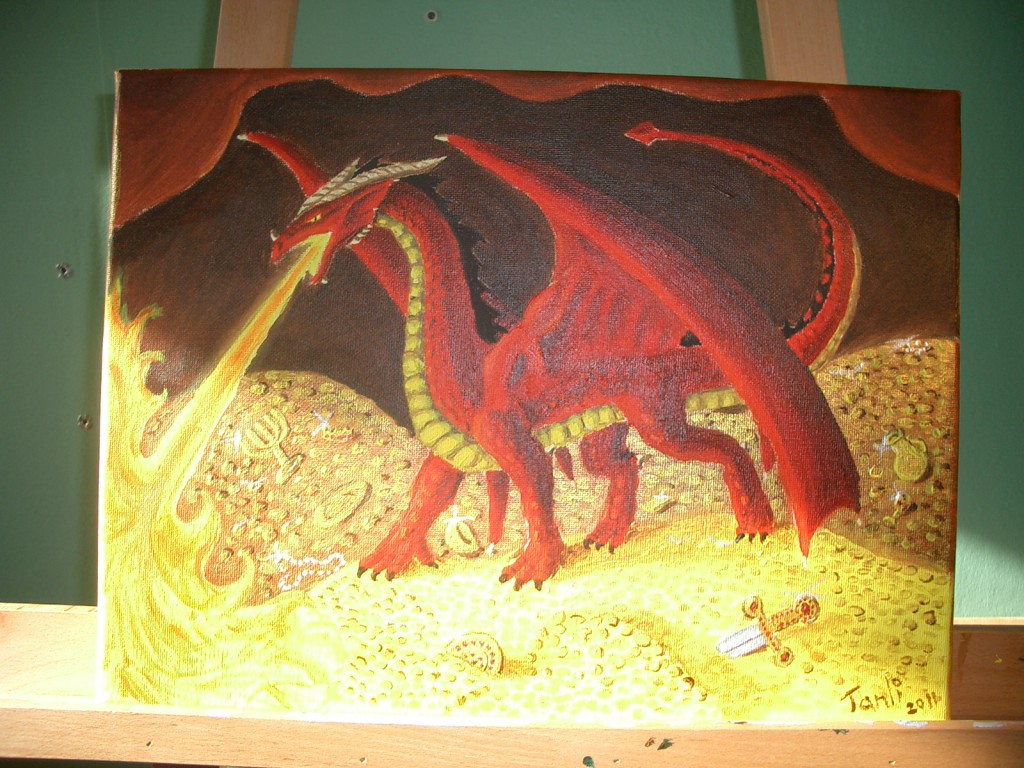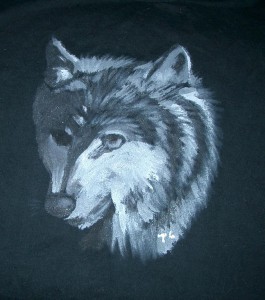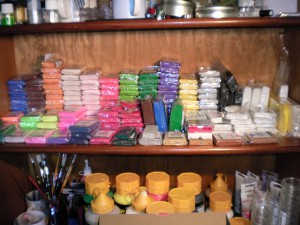I was at the cafe yesterday. They’ve sold some of my stuff! I could only find one pair of neon earrings left.
The Handicraft Cafe, as I call it, is run by Botkyrka-Salem Hemslöjdsförening, a craft guild for all kinds of traditional and new handicrafts. I became a member 4 years ago through one of my work colleagues. They run a cafe and displays the craft of the members there during the summertime and arrange a Christmas market at the end of November every year in Hågelby.
I’ve been at 3 christmas markets so far, with varying sales success, the second year was the best. But I don’t create much more during a year than I can sell at those two weekends and during the summer. Most of my other sales are commissions or through my workplace. That’s about all I can handle when working at the same time.
Most other members of the guild are retired from regular work and have much more time on their hands. I actually bring down their average age quite a lot. Many of them create in ceramics or wood, or knit and weave. Things most people would view as true ’handicraft’. But the guild also allows for newer craft such as jewelry making. The only rule is that the material used must be genuine, so no artificial nylon threads or plastic beads. Only glass, metal, wood, cotton or wool.
Some might argue that polymer clay is artificial, since it’s plastic. But they rule it as an art medium. As long as the beads, pendants or findings made with it are hand made, it is still counted as handicraft.
I’ve just started looking into resin casting. I better ask them about that…

